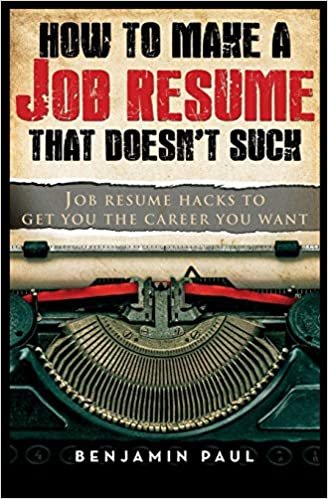CV Full Form in Job, What is CV Full Form, What is cv Full Form
The full form of the CV is Curriculum Vitae. CV is an overview of an individual’s academic and work credentials and other experiences. A comprehensive profile of a person includes the candidate’s full name, phone number, address, hobbies, educational qualifications, achievements, soft & computer skills, known languages, marital status, career goals, etc. The curriculum vitae includes your education and every other milestone, such as publications, honours, awards etc.
CV summarizes the experience and other credentials required for an individual’s career opportunity. CV is similar to an American resume. For certain countries, a curriculum vitae is typically the first item a prospective employer sees about job applicants and is used to screen applicants, frequently followed by an interview.
Few points to remember when you write a CV
- No need to include the photograph, salary background, references and the reason for quitting the previous job in the CV.
- On-demand, such information can be given separately to the employer.
- CV doesn’t involve more than two pages in some commonwealth nations (Ireland & UK).
- It involves just a description of the work history of job seekers, educational records & some personal details.
Difference between CV and Resume
The main differences between CVs and resumes are the length, the purpose and the design. The difference between both is listed below.
| Curriculum Vitae | Resume |
| In CV, there is no page limit. It includes all your professions, like your experience in education and academics. | In the resume, there is a page limit. It can consist of not more than one or two pages. No specific rule of format; the details snuff the finest suit of candidates. |
| It comprises your educational & academic records and also experience in teaching and research, honours, awards etc. | It is a concise summary of your relevant professional experiences surrounding the specific job you applied for. |
| The CV is constant for various roles and does not adjust. | Based on the condition of the employment, the resume can be updated. |
| Specifically, it is used in academic jobs such as staff openings, interns, fellowships etc. | It is commonly used for governmental, business & nonprofit jobs. |
CV full form in Hindi
दोस्तों सबसे पहले आपको बता दें कि CV का हिंदी में मतलब या फुल फॉर्म क्या होता है “CURRICULUM VITAE” (करिकुलम वीटा) . असान भाषा में इसको Resume और Biodata भी बोलते है ।
CV Full Form in Bengali, CV Full Form meaning in Bengali
CV-র ফুল ফর্ম হলো Curriculum Vitae। বাংলা ভাষায় সিভি-র পূর্ণরূপ হলো কারিকুলাম ভাইটা। একে বাংলাতে জীবন বৃত্তান্তও বলা হয়। এটি সাধারণত Internship ও Fellowship ইত্যাদির মতো একাডেমিক পদে অথবা কোনো অফিসে বা কোম্পানিতে কাজের আবেদনের জন্য ব্যবহার করা হয়। CV-র মধ্যে আপনার পুরো নাম, ফোন নম্বর, ঠিকানা, ইমেল আইডি, শিক্ষাগত যোগ্যতা, শখ, সাফল্য, দক্ষতা, ক্যারিয়ারের উদ্দেশ্য, বৈবাহিক অবস্থা ইত্যাদির তথ্য থাকে। এটি সাধারণত দুই থেকে তিন পাতার হয়ে থাকে।
CV Full Form in Marathi
CV म्हणजेच “curriculum vitae”. CV ला मराठी मध्ये “बायोडाटा” किंवा “रिश्युम” असे म्हटले जाते.
परंतु cv आणि resume मधे थोडासा फरक जाणवतो. Resume मध्ये आपल्याला आपली माहिती ही शैक्षणिक पात्रता बद्दल आणि कौशल्य बद्दल अगदी थोडक्यात विचारली जाते. परंतु सीव्ही मध्ये आपल्याला आपली माहिती ही संपूर्ण संक्षिप्त रूपामध्ये द्यावे लागते. तसेच बायोडाटा मध्ये आपण आपली वैयक्तिक माहिती देतो. मुख्यता बायोडाटा हा लग्नाच्या वेळी तयार केला जातो.
To Read more such informative Blogs Click Here
hradvosrs4u Blogs
How to Make CV for Freshers
Learning how to highlight your skills and accomplishments on your resume can help you make a positive impression on the hiring manager. Consider these steps to create a resume:
Review the job description
Make sure to review the job description carefully to understand the employer’s requirements. This includes noting the skills required and reviewing the educational requirements, along with any additional information, such as relocation or travel requirements. Include specific keywords on your resume that an employer may prefer. For example, if an employer is looking for a graduate who can work in the cyber security space as a junior analyst and you have completed an internship or have relevant certifications in the same field, try to include it.
Select a format
An important aspect of a resume is its layout and format. A visually appealing and well-formatted resume is easier to read and demonstrates professionalism and organisational skills. Format your document with a one-inch border, clear font and aligned bullet points. Make your resume easier to read by organising all the information into neat blocks. You can use various templates from online databases and word-processing applications.
Add your contact information
You can add your contact information to the top of your resume. It makes it easier for hiring managers to contact you for a follow-up or an interview. Be sure to provide your full name, phone number and email address. You may choose not to include your home address as most communication takes place online, via emails or online meetings.
Include your professional summary
Include your professional summary below your contact information. The aim of this paragraph is to summarise your key skills, relevant experience and achievements. You can also include your career goals and why you are a suitable candidate for the position. Including this information on your resume helps the hiring managers get a quick overview of your profile.
Provide relevant work experience
Experiences relevant to the application process include internships and volunteer activities or work in academic institutions. For example, if you developed a website for your college and are proficient in front-end development, you can include this on your resume. You may also include any interesting projects you worked on while in college. This helps the employer understand your areas of expertise and gauge your technical and soft skills. Include only relevant details and keep this section concise.
Include your educational background
Your educational background is a vital component of your resume. List your educational details in reverse chronological order. Mention the name of the degree, the college name, the location and the date of graduation. You may add your grade point average to demonstrate your knowledge of the subject. If you have relevant certifications, include them in this section. For example, if you have a certification in blockchain development, you can apply to companies that work on smart contracts or Web3.
Highlight your skills
Make sure to include both hard skills and soft skills in this section. Technical or hard skills may include web development, database management, network security or machine learning. Soft skills include good interpersonal skills, teamwork, problem-solving abilities or leadership.
How to Make CV

How to Make a Job Resume That Doesn’t Suck: Job Resume Hacks to Get You the Career You Want



Add a Comment